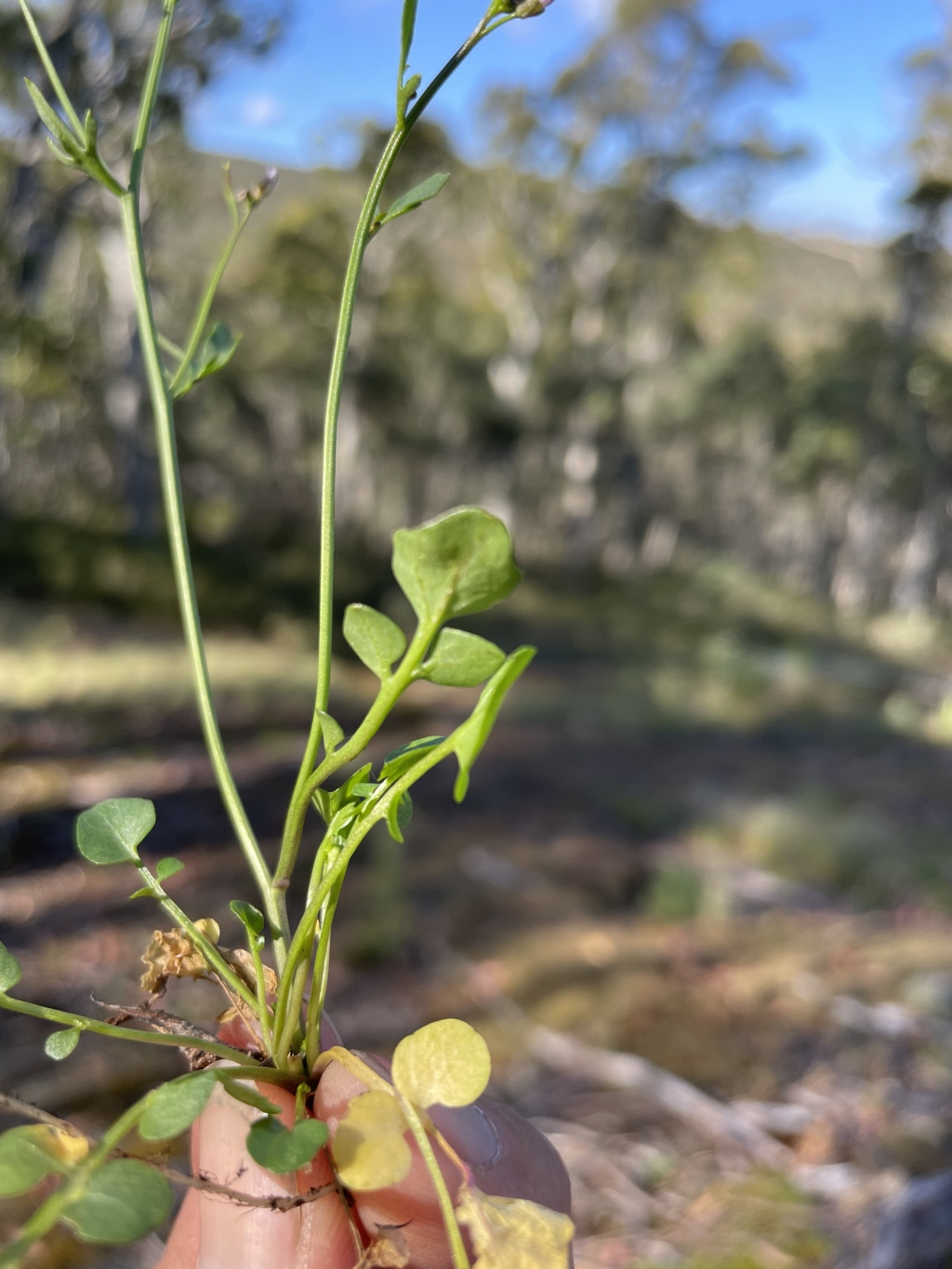Cardamine papillata
I.Thomps.Annual to perennial, to 25 cm high, taprooted; stems erect, slender, glabrous, sometimes minutely papillose. Leaves mostly basal, simple or pinnate with 1–2 pairs of lateral pinnae; basal leaves few-many, 2–7 cm long, rosetted, terminal pinna ovate to cordate, lateral leaflets more or less orbicular, short-stalked or sessile; cauline leaves 0–3, 0.5–2(–6) cm long, the lowermost often similar to basal leaves, upper leaves much reduced, margins sometimes papillose. Racemes usually few-flowered; sepals 1.5–2.5 mm long; petals 3–5 mm long, white or pink; mature style to c. 1 mm long. Fruits 20–35 mm long, c. 1 mm wide, held fairly erect; pedicels 5–15 mm long, often minutely papillose; seeds 1.0–1.2 mm long. Flowers late winter–spring.
GleP, VVP, VRiv, GipP, OtP, WaP, Gold, CVU, GGr, EGL, EGU, HSF, MonT, HFE, VAlp. Also SA, NSW, ACT, Tas. Grows in hilly, forest areas across Victoria.
Basal leaves form a small rosette which usually persists at flowering, and scapes appear bare due to the small number and size of the cauline leaves. When present, the papillae clearly distinguish this species from other small-petalled native species such as Cardamine moirensis. Previously included in C. paucijuga, but compared to that species C. papillata has shorter leaves and flowering stems and fewer and differently shaped cauline leaves.
Thompson, I.R. (1996). Cardamine. In: Walsh, N.G.; Entwisle, T.J., Flora of Victoria Vol. 3, Dicotyledons Winteraceae to Myrtaceae, pp. 434–442. Inkata Press, Melbourne.
 Spinning
Spinning

